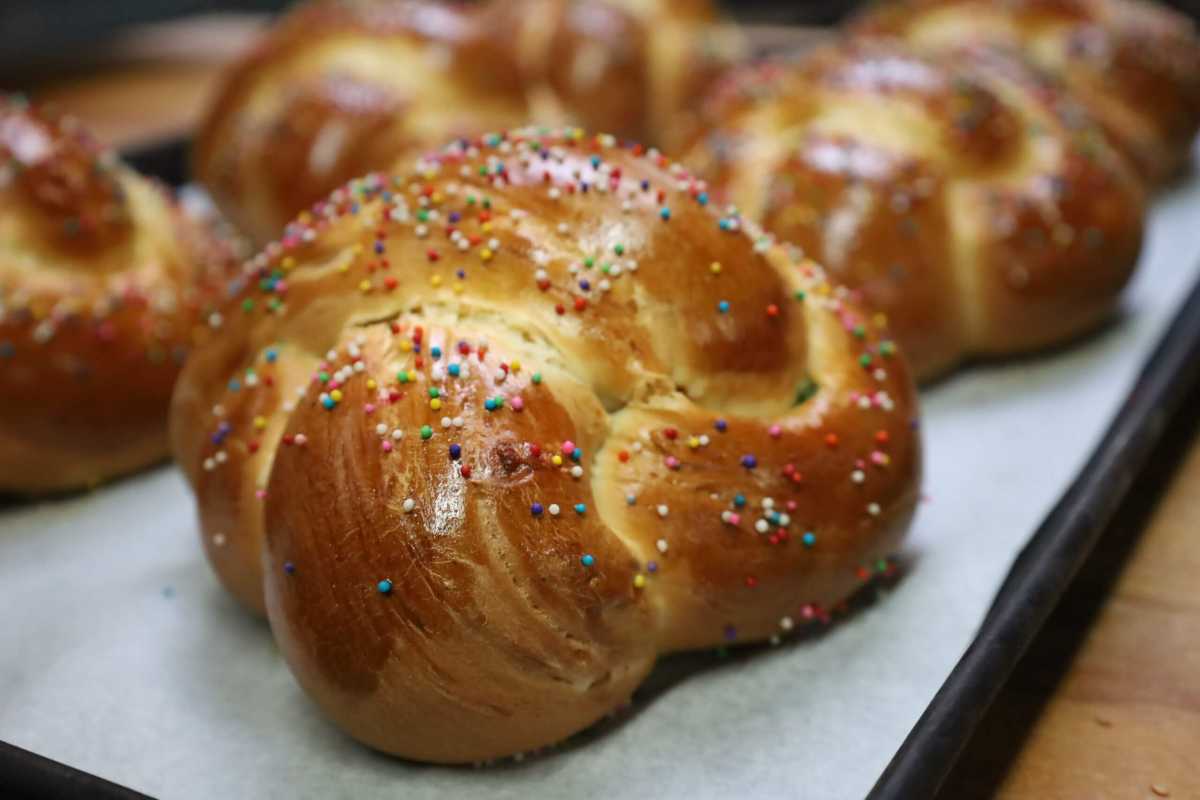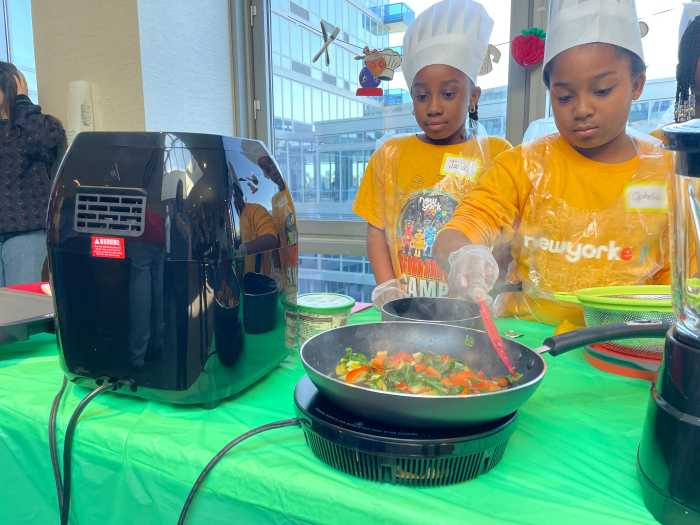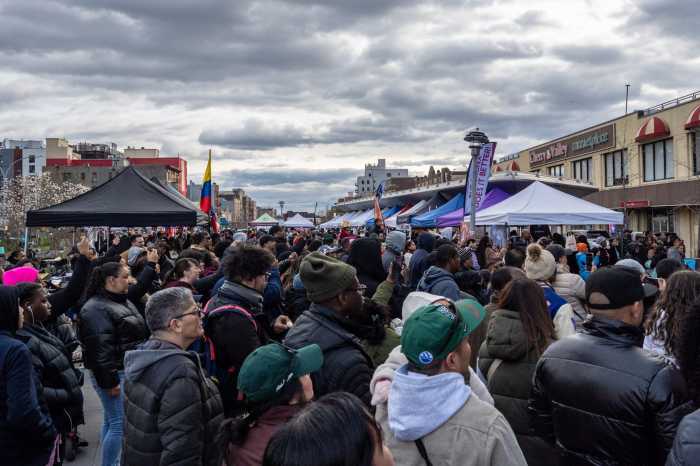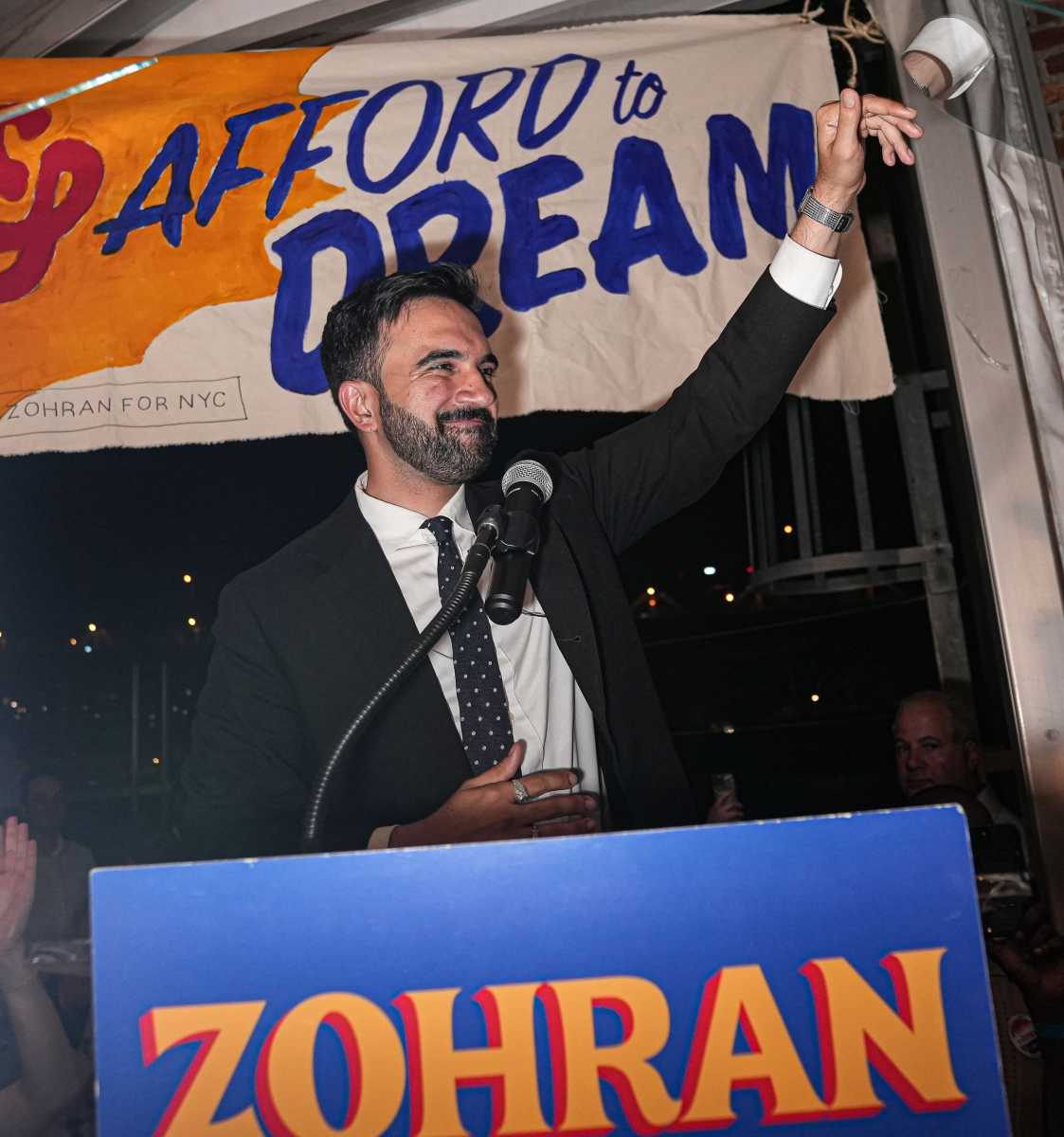“Hot cross buns, hot cross buns. One a penny, two a penny, hot cross buns!”
That was an innocent and popular English nursery rhyme, but many may not be aware that the cross on the buns signify the crucification of Jesus Christ. Hot cross buns, along with Easter bread, have religious connotations and are traditional Easter foods that date back centuries.
“For Catholics, (bread) represents his body, his blood, his life given for us, saving us from our sins and giving us that new life, that new birth,” said a spokesperson for Our Lady of Mount Carmel Church located at 627 E. 187th St. “Some people put eggs in the bread to signify that new life. Some people make crosses on the bread to signify the cross. We say we receive his body ‘under the disguise of bread.'”
In Luke 22:19-20, Jesus breaks the bread and shares it among his disciples saying, “This is my body which is given for you. Do this in remembrance of me.” He did the same with wine, using it as a symbol of his blood.
The religious holiday, Easter, is the culmination of Lent which, begins on Ash Wednesday — Feb. 22 this year. For 40 days and 40 nights, Catholics sacrifice a temptation and some can be as benign as giving up soda.
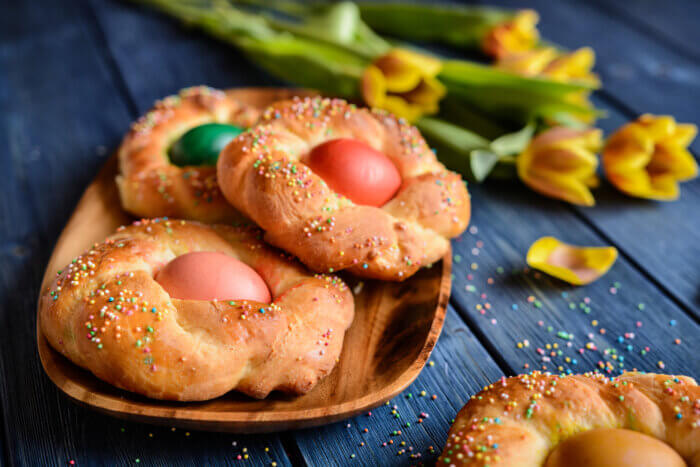
The eggs that are typically seen in Easter bread are the traditional Easter eggs — the kind which are hard-boiled and dyed in pastel colors. Easter bread is sweet with fruit inside like currants and raisins, is glazed to a shine with an egg-wash and comes in many varieties.
“We don’t color the egg anymore,” said Carlo Pollicina, head baker and owner of Sal and Dom’s Pastry Shop on Allerton Avenue. “We used to years and years and year ago, but we just use a hard-boiled egg now.”
Sal and Dom’s has been open since 1956 and Pollicinia, 54, said he’s been making Easter bread “my whole life.” The bakery makes several sizes of bread. Some have one egg and weigh a few ounces, some have two and others are made in the shape of a cross, which is estimated to be 16 inches wide by 18 inches long.
On Friday Pollicina expects to make up to 100 loaves. Over in Little Italy, Addeo & Sons’ bakery recipe is a bit different.
“A lot of people say ‘where’s the egg?’ — I don’t do that,” said Laurence Addeo, owner and head baker of Addeo & Sons bakery on Hughes Avenue. While there are eggs in Addeo’s mix, there are none for decorative purposes. “I make it that way because I want to eat my bread. I don’t want to be picking shells out,” he added.
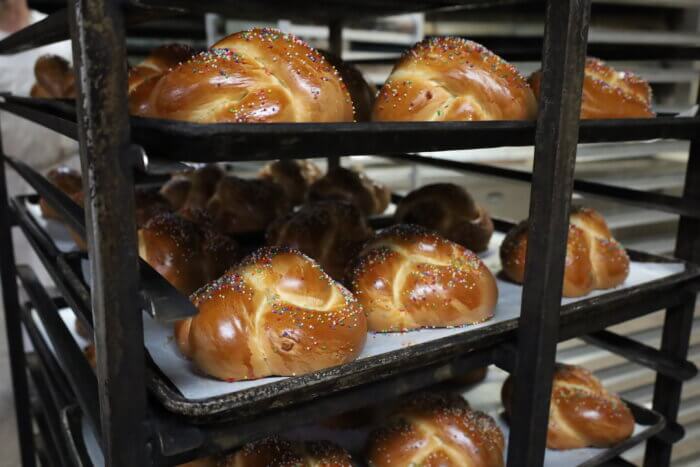
Addeo & Sons bakery is located in the historically Italian and majority Catholic neighborhood of Little Italy, where the bakery has served the community for nearly 90 years.
Originally in Harlem, they moved to the neighborhood in the 1930s and have two locations — the shop on 186th Street and Hughes Avenue as well as a storefront on Arthur Avenue. When it gets close to Easter, they bake upwards of 230 loaves a day. Addeo has been running the business with his cousin Thomas Addeo since they took it over in 1998 and starts his baking around 3 a.m.
On the morning of Monday, April 3, Maria Callaro from Scarsdale was ordering her usual batch of Easter bread there, which she has been doing for 40 years. Her husband, a Bronx native, has been ordering the bread his whole life, which is why she makes the trip.
“It’s tradition,” she said.
Easter is celebrated this year on Sunday, April 9.
Reach ET Rodriguez at etrodriguez317@gmail.com. For more coverage, follow us on Twitter, Facebook and Instagram @bronxtimes

